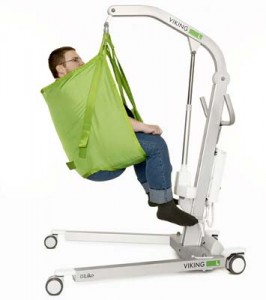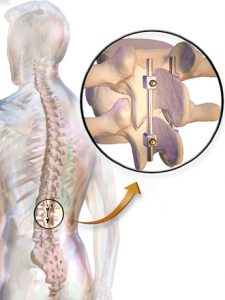In our industry, we see hundreds of work comp injuries per year. In Missouri and Illinois, work comp coverage is available to a majority of workers following an injury. Our clients come from all types of industries. When most people think of a person sustaining a back injury at work, they think of construction workers, factory workers, and other blue collar positions. The reality is, the industry who suffers the most occurrences of a back injury are in the medical field. It is reported that nurses are three times more likely to experience a back injury at work than a laborer. According to the Bureau of Labor Statistics, roughly 10% of all nurses, nursing aides, and other related medical professionals will suffer a work comp back injury during their employment.
Why is the nursing profession at such high risk for a work comp or back injury?
Nursing assistants incur more work comp injuries than ANY other profession in America. There are approximately 35,000 occurrences of a nursing back injury per year. In training, medical professionals are trained to lift patients using a method of bending the knees and keeping the back straight. Experts agree this method of lifting is dangerous and opens the worker up to the possibility of a back injury. According to experts, there is no safe way to manually lift a patient. When you consider the size of some of the patients that are being treated, it is clear a work comp back injury could occur easily. If a patient weighs 200 – 300 pounds, their lower limbs and torso can weigh upwards of 40 – 60 pounds. Even if nurses and nursing assistants had help lifting the patient, each quadrant of the body would weigh approximately 50 – 75 pounds. The risk of a back injury rises significantly due to the fact these workers are lifting patients as described anywhere from 15 – 25 times per day.
Have hospitals taken measures to reduce the likelihood of a work comp back injury?
Many hospitals and assisted living facilities are private entities who are not governed by state and federal governments, as many other professions are. This makes it nearly impossible to determine the exact number of work comp or back injury occurrences there are each year. OSHA cannot intervene in workplace safety due to this fact, as well. Some facilities have opted to purchase robotic and mechanical lifts to take the burden off of the medical staff and to reduce occurrences of back injury. Baptist Health System in Florida successfully reduced work comp injuries by 80% after purchasing and using machinery designed to assist with lifting patients.
However, in facilities across the nation, even when equipment is purchased to reduce the likelihood of a back injury or work comp injury, staff often does not have the luxury of using it. NPR did a study of Kaiser Permanente, a health system based out of California which includes 38 hospitals in 3 separate states. Their study found that many of their system’s facilities had lift machinery and had implemented lift teams to ensure nurses and assistants were not taking on more weight than they could handle. NPR’s investigation showed staff members often had no access to the machinery. Sometimes the battery would be dead, other times the machinery was already in use in another area of the hospital, and there were occurrences when the machinery was not accessible due to poor storage.
The lift teams implemented are good, in theory, at preventing a back injury. However, hospitals are often times understaffed. When a nurse would request a lift team, sometimes no one would respond, or just one person would respond, as others assigned to this team were already busy doing other tasks. It is important that hospitals properly staff their department lift teams so that a work comp back injury can be avoided.
You work in a hospital, so work comp treatment should be readily available, right?
Wrong. Many states require injured workers to treat with an assigned physician. In Missouri, we call it “authorized care.” Generally speaking, the work comp insurance carrier contracts with certain providers to administer treatment for a work comp injury. Imagine sustaining a back injury. You report the back injury to your employer and they ensure you that you will get treatment fully paid for by the work comp insurance company. You are scheduled for an appointment with a doctor of the employer’s choosing. You get x-rays, undergo examinations, possibly get medications prescribed to you; then you never get to see a doctor again. Situations like this happen in work comp more often than you think.
A nurse who was employed by a hospital in the Kaiser Permanente system was moving a patient during a shift when she experienced a burn and sharp pain in her shoulder. Many times when you sustain a shoulder or back injury, symptoms are mild at the early onset and get progressively worse as time goes on. After her shift, the nurse experienced such extreme pain, she could not brush her hair or lift her toothbrush. She reported her injury to her employer so she could obtain work comp benefits. She was sent to the staff health unit within the hospital where she was employed. The work comp provider took x-rays and MRIs, but did not see anything remarkable. She continued to experience pain and underwent several injections for pain relief. Nothing helped. After several months, and the help of a work comp lawyer, she eventually had to undergo two surgeries for a full rotator cuff repair.
Increase in back injury work comp claims to nurses causes change to CA law
 Due to such an exorbitant amount of work comp injuries across the state, California State Legislature passed the Hospital Patient and Health Care Worker Protection Act in 2012. The Act protects workers from becoming, yet another, work comp statistic. Reports showed some facilities had more than one work comp injury per day, often in the form of a back injury. In an industry that is supposed to be concerned for the health and safety of the general public, one would think the same courtesy would be available to the workers. In California, up until 2012, that courtesy was a proverbial roulette when working as a nurse or nursing assistant. Thanks to CA state government, nurses and other medical professionals have extra protection under the state’s work comp law. In addition to passing the law, a California judge issued an order on January 31, 2014 requiring California hospitals to repair errors with the lift equipment within 90 days. No longer could a dead battery or bad storage of the lift be a reason for a medical staff member to sustain a back injury.
Due to such an exorbitant amount of work comp injuries across the state, California State Legislature passed the Hospital Patient and Health Care Worker Protection Act in 2012. The Act protects workers from becoming, yet another, work comp statistic. Reports showed some facilities had more than one work comp injury per day, often in the form of a back injury. In an industry that is supposed to be concerned for the health and safety of the general public, one would think the same courtesy would be available to the workers. In California, up until 2012, that courtesy was a proverbial roulette when working as a nurse or nursing assistant. Thanks to CA state government, nurses and other medical professionals have extra protection under the state’s work comp law. In addition to passing the law, a California judge issued an order on January 31, 2014 requiring California hospitals to repair errors with the lift equipment within 90 days. No longer could a dead battery or bad storage of the lift be a reason for a medical staff member to sustain a back injury.
Hospitals owe a safe workplace to their medical staff. They do so much for us when we can do so little for ourselves. It’s time for these facilities to protect the ones who make them successful.
If you or a loved one has sustained a work comp injury or a back injury on the job, please call us at 314-862-7222 or contact us online to discuss your legal rights.
